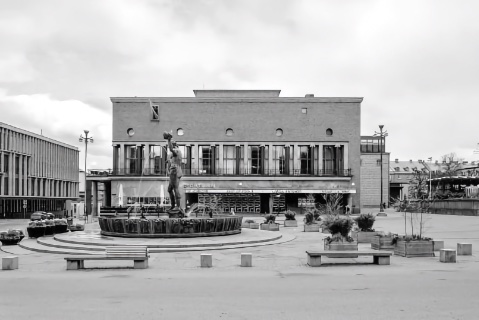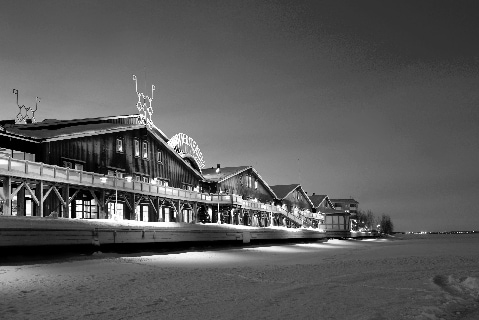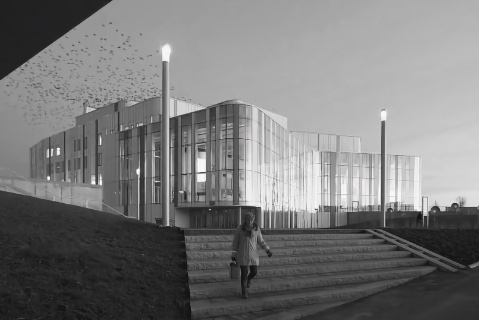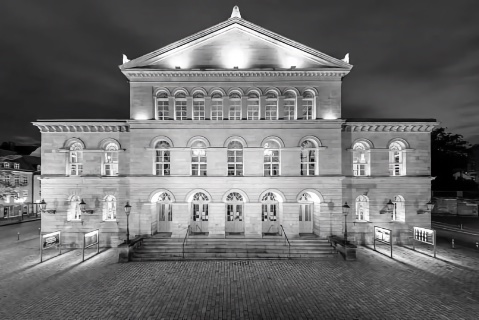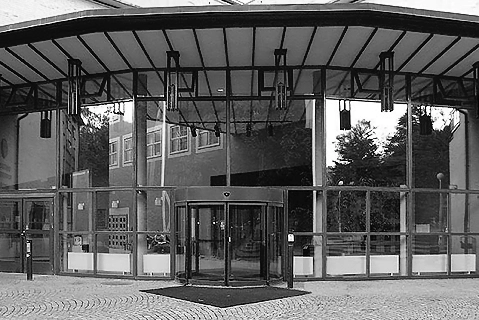biography
A child hiding on the side of the stage, observing the border between the audience and the actors, between reality and fiction. In those days I discovered that some adults were still playing and I would be one of them.
Art, like nature, had a calming effect on me. I discovered that a certain dose of fiction was necessary to lead a bearable life. Some artists broadened my vision of the world for good.
I wanted to study acting, but when I read the entrance exams, I realized that I had too much ego to stand in front of a jury and recite Shakespeare.
At that moment my angel Gabriel pointed “scenography” in my ear and it seemed like a brilliant idea, to keep playing like one of my favorite games: illustrations with panoramic landscapes into which I could transfer characters of different sizes to fit them into the perfect perspective. In fact, that’s what I still do when I design the space of a project, I can capture an idea on a graphic level quickly, but it’s when I put the human figure when the real essence emerges, or not.
So, at the age of 18, I entered the Institut del Teatre of Barcelona. I am where I have to be, everything interests me, the students, the teachers, the workshops. I combine studies and work as an assistant set designer and even designing for some children’s theatre groups.
It was then that I had the opportunity to make a film as a prop designer with the artistic director Pep Oliver, and so I spent several years working mainly in television, cinema and advertising, involuntarily distancing myself from the theatre.
The commitment and speed that filming demands gave me very useful gymnastics for the future. On a shooting, a parallel reality is created with other values that give something mystical to the experience, it reminds me of the world of fairs or the circus.
Some of the names I collaborated with in those first 15 years are, among others, the set designers Pep Oliver, Vicenta Obon, Ramon Ibars, Agnes Ricart, Jordi Yrla, Rosa Español, Carlos Conti and Francesc Cardeña.
The directors Jordi Cadena, Jordi Frades, Jorge Grau, Guillem Morales, Clive Gordon, Virgini Tavernet, Eduard Cortes, Isabel Coixet and Kenny Ortega.
Stage directors such as Jaume Melendres, Carles Santos, Jordi Mesalles, Miquel Crespi and Juan José Alonso Millán.
And the production companies El Terrat, Gest Music, Diagonal TV, Morena Films and Drimtim.
It took me some time to climb up the strict audiovisual hierarchy and when I was just arriving and in the middle of a shooting for Disney Channel, I received a call from the Swiss Theater director Stefan Metz. He offered me to be the scenographer for a Woyzeck at the national theatre in Gothenburg. I had to say no because I was engaged to uncle Walt, but of course I rectified, left the film and went to Gothenburg.
Woyzeck was a radical change in my professional life. Since then, Sweden has been the place where I work and I have done more than 35 plays there. The first years with Stefan were full of enthusiasm and love, creating a beautiful flow between all the departments at Göteborg Stadsteatern.
We also did Twelfth Night, where the audience had a great time and an amazing Peer Gynt where we experimented with the possibilities of creating very large spaces with very little material: thin plastic and air.
We staged the contemporary play The lights, in which we had large C-shaped movable spy mirrors that created beautiful choreographies of distorted reflections.
Suddenly I found myself with a three-year contract as resident scenographer for this fantastic theatre.
There I worked with the spanish director Andrés Lima on the beautiful play Blackbird, where I used for the first time a material that I love. We also did The Danton Case and People, places and things at Stockholm Stadsteatern.
I collaborate with director Tobias Theorell designing the costumes for the play Tartuffe and the opera Salome in Landestheater Coburg as a scenographer.
Other directors I work with are Richard Turpin, Emil Graffman, Ronny Danielsson, Nora Nilsson, Malin Stenberg and the vigorous Mellika Melouani with whom we did a punk version of Chekhov’s The Three Sisters and The Threepenny Opera with many surprises at the Stockholm Folkoperan. I also work with Ronnie Hallgren in the piece End Game, reproducing a disturbing anechoic chamber on stage.
My professional relationship with Stefan Metz was interrupted after a complicated staging of The Bible, but thank God we got back on track with a very successful Master and Margarita at the Dramaten, where the space reproduced an old abandoned theatre. More recently we have staged Strindberg’s People of Hëmso, where we filled the stage with walkable and stackable cardboard platforms. Quite a challenge.
Our latest collaboration was an Orlando at Norrbottenteatern and we are currently preparing The Father at Kulturhuset Spira in Jönkoping.
Every aesthetic has its own ethic. Designing the aesthetics of a performance gives to the scenographer and the director the possibility to lay the foundations on which the piece should run coherently. The deeper and more respectful the relationship between director and scenographer, the less the audience will be hurt by the price of the tickets.
Nowadays, stage design is far from being a decorative art as it may have been in the 19th and part of the 20th century. Artistic direction has reached such a level of expressive freedom that now is not an art “at the service of” but often becomes excessive protagonist, losing the necessary balance between form and substance.
Scenography must reveal depths contents of the performance.
If you have something to explain, I’d love to meet you.
Alejandro Tarragüel





